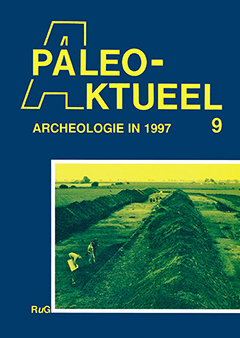DE FRANJESTIJL & CO. OVER MAT-BESCHILDERD AARDEWERK UIT DE ALTAARAS OP DE 'TIMPONE DELLA MOTTA', FRANCAVILLA MARITTIMA
Samenvatting
During the Early Iron Age in southern Italy, the regions of modern Apulia, Basilicata and Calabria saw the production of a special kind af pottery, usually labelled 'matt-painted'. It was hand-made and decorated with geometric motifs in brownish-black paint. The studies of Dr D. Yntema, archaeologist af the AIVU in Amsterdam and international specialist on this pottery, demonstrated that it can be divided into proto-, early, middle and late Geometric styles. A remarkable conclusion in Yntema's work is that during the proto- and early Geomelric periods no regional styles occurred. Only during the middle Geometric period (from c. 775 BC onwards) did regional styles appear: for instance in the Salento (the heel), in Basilicata and in Calabria. In this article the middle Geomelric style of the Sibaritide is commented upon, especially the material recently excavated by a team from Groningen University, at the Timpone della Motta, in an altar-ash layer which also contained 9th-century BC early Geometric material. The middle Geometric 'fringe' style, prominent among the sherds in the altar-ash layer an the Timpone della Motta, was produced and used mainly in three indigenous sites af the Central Sibaritide: Torre Mordillo, Castrovillari and Francavilla Mma. Judging from this evidence - and from the fact that these sites survived as indigenous sites after Sybaris was founded a few decades before 700 BC, while in the northern Sibaritide Braglia di Trebisacce did not - the authors believe that the 'fringe' style identifies the oldest area of common interest of the Greeks and the indigenous Enotrians.

